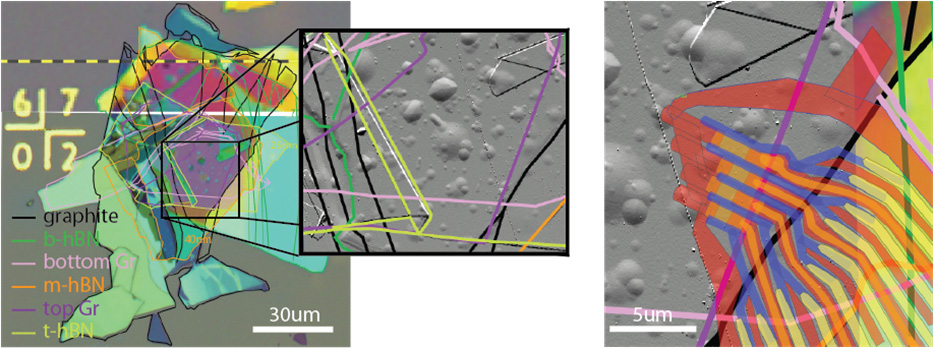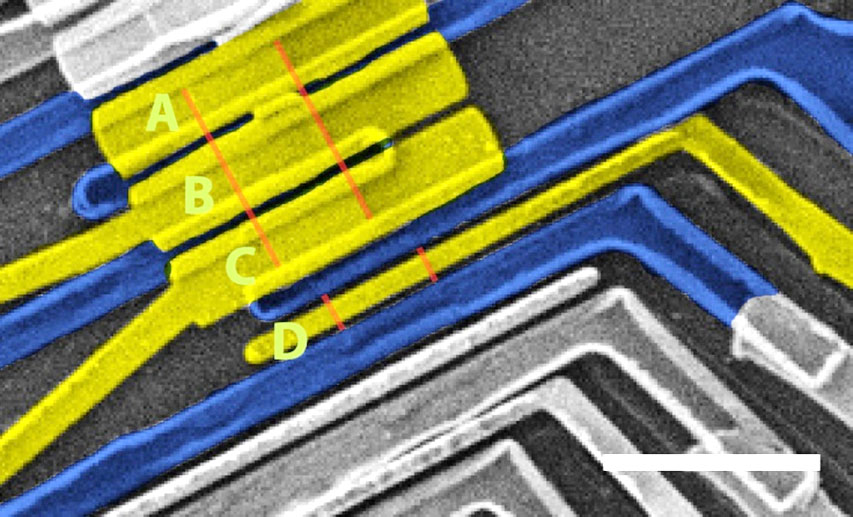suspended CVD graphene
There are various ways to measure the magnetic field, for example, by the force exerted on a ferromagnetic needle, by the voltage measured at the two ends of a wire wound into a coil or through the Hall effect that appears in a thin film semiconductor. The most sensitive magnetic-field detector, however, is based on dissipation less, coherent states of a superconductor: the superconducting quantum interference device, abbreviated as SQUID.
Now, David Indolese and coworkers report in the journal Nano Letters how they have realized one of the tiniest SQUID ever fabricated. They stacked two graphene layers on top of each other, yielding a double decker SQUID.

The technology of stacking materials arose from the discovery of graphene and other van der Waals materials, which are layered materials that can be cleaved down to single layers by exfoliation and have unique properties. Almost like the lego blocks these materials can be picked up and stacked together to create new materials from a few building blocks. The SQUID fabricated by David Indolese is a six-layer stack. It starts with a thin graphite bottom gate electrode followed by an hexagonal boron nitride (h-BN) gate insulator, a monolayer of graphene, the h-BN spacer layer of thickness 10-20 nm, the second graphene monolayer, followed by the an upper thicker hBN gate dielectric on which a top-gate is evaporated afterwards. Finally when two superconducting contacts connect the two graphene monolayers yielding a compact SQUID.

University news (with video): link to university news
Link to the publication: link to the publication









